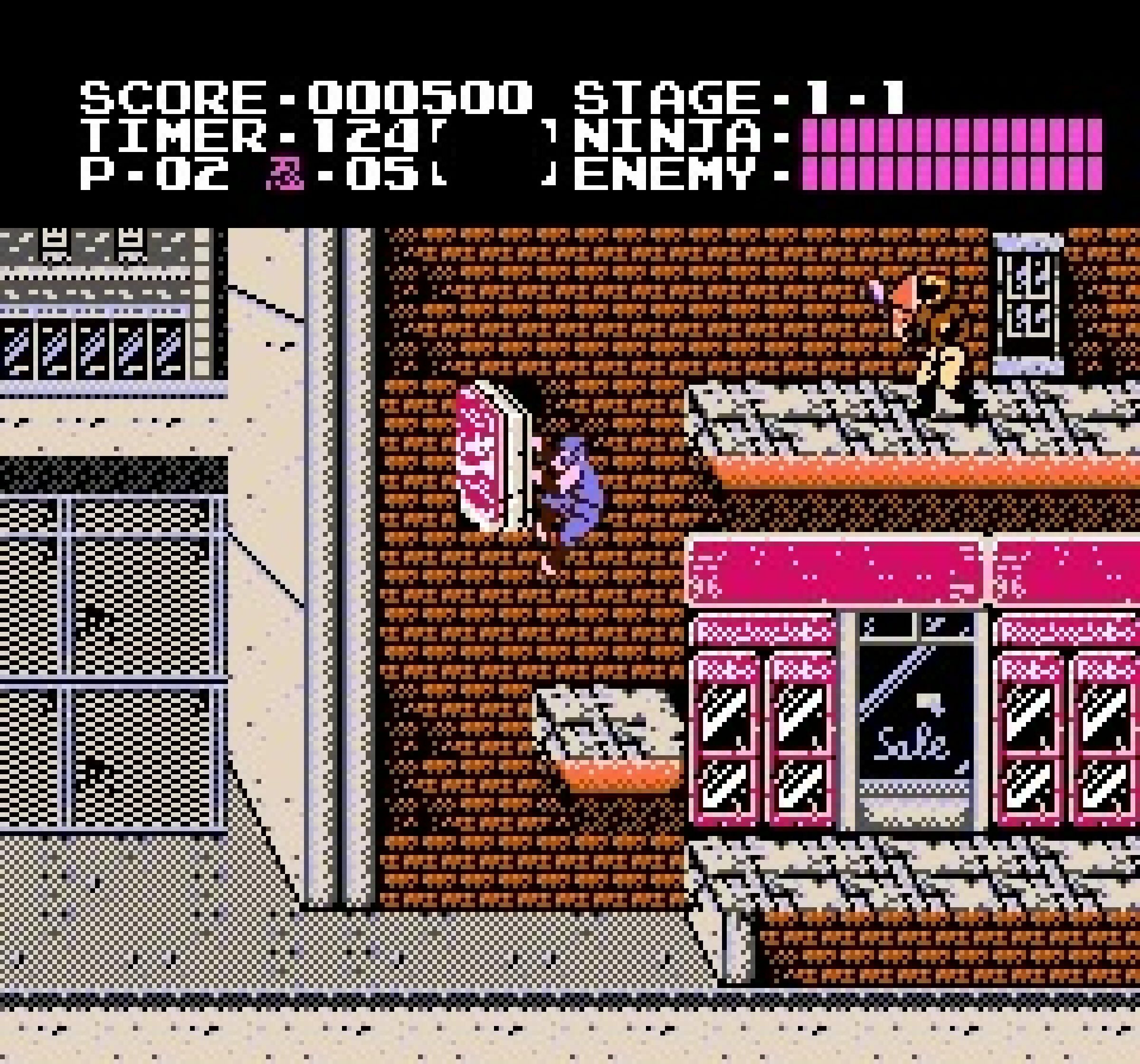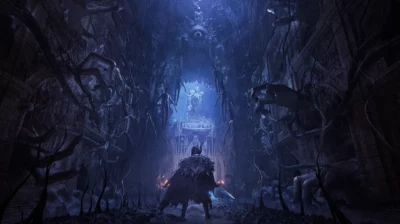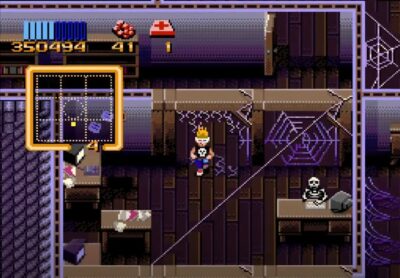
Ninjas were well and truly in the cultural zeitgeist by the late 1980s, but it took Tecmo’s game to truly capture the feel of controlling a fleet-footed shadow warrior. Sega’s Shinobi came out one year before Ninja Gaiden, but its shuriken-lobbing action felt far more measured than Tecmo’s offering. Where Shinobi’s Joe Musashi plodded through levels and hopped up on the occasional high platform, Ninja Gaiden’s Ryu Hayabusa sped along with the devil at his heels, barely pausing to slash away at enemies as he went. The wall jump was all part of Ryu’s nimble moveset: with it, he could leap up to a street sign, cling to it, then fling himself onto a platform opposite.
Admittedly, the origins of certain game mechanics can be difficult to pin down. Even with the wonder that is the internet, it’s hard to say definitively whether Tecmo really did invent the wall jump, or wall cling, with its seminal Ninja Gaiden in 1988. But if some earlier more obscure game came up with the mechanic first, then it’s at least true that Tecmo succeeded in bringing the wall jump to the masses.
For the time, the wall jump was a thrilling thing to see in a platformer. Earlier titles like Donkey Kong and Super Mario Bros. may have refined the genre’s jumping mechanics, but the sense of speed and athleticism Ninja Gaiden introduced was pretty much unparalleled. Allied to some deftly programmed controls, Ninja Gaiden’s wall jump was all part of Tecmo’s goal of creating an action game with a cinematic sense of drama and movement.

In the years since its release, much has been written about Ninja Gaiden’s eye-watering difficulty level, and Ryu Hayabusa’s freedom of movement plays an important role here, too. Ninja Gaiden is the kind of game that will kill you in a heartbeat, but the range and precision of the controls means those deaths seldom feel unfair. Cheap at times, certainly, but not entirely unavoidable.
Looking back, it’s impressive just how quickly the wall jump evolved from its late-eighties roots. Just one year after Ninja Gaiden, along came Capcom with Strider, in which its futuristic hero could cling and jump from wall to wall with such floaty abandon, it almost felt as though he was cartwheeling through each encounter.
The Master System version of Ninja Gaiden, released in 1992 – a standalone game programmed by SIMS rather than Tecmo – is also worth noting for subtly advancing the original game’s wall run. In it, Ryu Hayabusa could leap from one wall to the next more rapidly – a move which allowed him to easily scale his way out of, say, a narrow well created by two stacks of crates.

From the late 1990s onwards, the wall jump moved into the 3D realm. It became a part of a certain Italian plumber’s skillset in Super Mario 64 and just about every game in the series thereafter, and from that point on, most action games contained a riff on the move, whether it was cutesy fare like Ratchet & Clank or grittier outings like Mirror’s Edge or, of course, Tecmo’s own Ninja Gaiden series of 3D games which started to appear in 2004. It could also be argued that the wall run, a gravity-defying trick seen in the likes of Prince of Persia: The Sands of Time and Titanfall, is an evolution of the wall jump.
It all feeds into what Demon Turf developer Fabian Rastorfer described in our issue 53 interview as “expression through the act of simple movement”. Today, most gamers are familiar with the concept of being presented with an obstacle course of platforms, pits, and hazards, and then being given an arsenal of moves they can use to traverse it. The level designs may be set in stone, but how the player chains their double jumps, wall clings, and other moves together is what creates the intoxicating sense of freedom and self-expression. All of that arguably began, in nascent form, in Tecmo’s masterful Ninja Gaiden.





